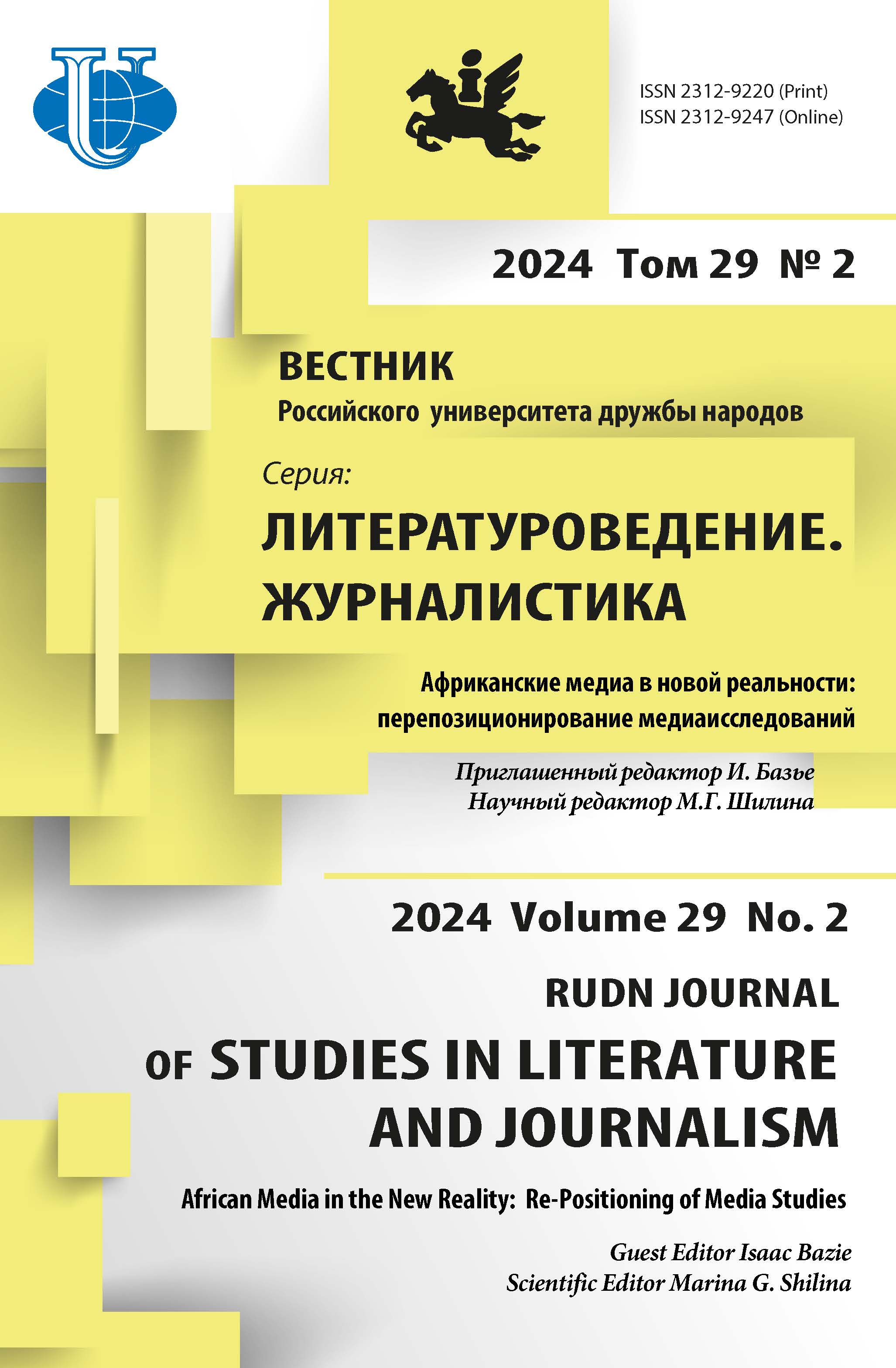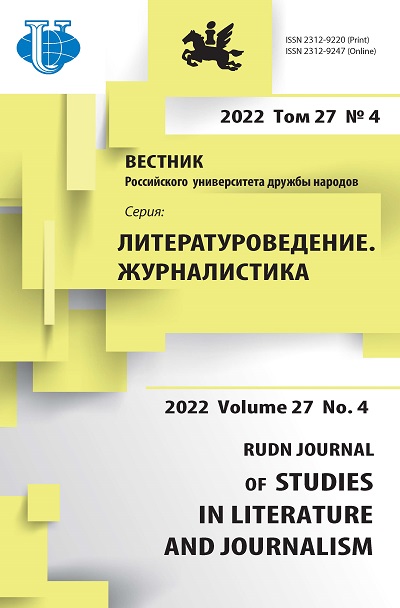Hétfői Hírek - substitute newspaper in the system of the Hungarian press
- Authors: Pynina T.Y.1
-
Affiliations:
- Peoples’ Friendship University of Russia (RUDN University)
- Issue: Vol 27, No 4 (2022)
- Pages: 735-744
- Section: JOURNALISM
- URL: https://journals.rudn.ru/literary-criticism/article/view/33285
- DOI: https://doi.org/10.22363/2312-9220-2022-27-4-735-744
Cite item
Full Text
Abstract
The weekly publication Hétföi Hírek , which played a significant role in the development of the Hungarian press system in 1957-1985, is considered and analyzed. The author introduces a new definition of “substitute newspaper” into scientific circulation in relation to this publication, the only media that was published on Monday, a day off for the Hungarian mass media. In addition to news content, the weekly, which had two issues (morning and evening), posted incident reports, advertisement, and announcements. The newspaper was distributed mainly through street sales, which is typical of Hungarian tabloid periodicals. The Hétföi Hírek edition had the characteristics of both a quality and mass edition, so we can talk about its mixed format. The analysis of the “substitute newspaper” is essential for understanding the features of the Hungarian media in their historical context, as well as for studying the activities of the media in the formation of a certain model of reality, managing information flows, motivation and behavior of society. The analysis of Hétföi Hírek is carried out for the first time, based mainly on research conducted by the author in Hungary, using archival sources and applying an interdisciplinary methodological framework.
Keywords
About the authors
Tatiana Yu. Pynina
Peoples’ Friendship University of Russia (RUDN University)
Author for correspondence.
Email: tanyi@inbox.ru
ORCID iD: 0000-0001-5248-6792
PhD of Philology, Associate Professor of Mass Communications Department, Faculty of Philology; member of the Union of Journalists of Moscow, member of the Board of the Russian-Hungarian Friendship Society.
10 Miklukho-Maklaya St, bldg 2, Moscow, 117198, Russian FederationReferences
- Altermatt, U. (2000). Ethnonationalism in Europe. Moscow: RGGU Publ. (In Russ.)
- Chomsky, N., & Berwick, R. (2021). Human speaking: Evolution and language. St. Petersurg: Peter Publ. (In Russ.)
- Gombar, C. (2009). About Hungary, about ourselves. Lines of division, history, state. In I. Kalinin (Ed.), The Cold Civil War: Splitting Hungarian Society: A Collection of Articles (pp. 8–50). Moscow: Novoye Literaturnoye Obozreniye Publ. (In Russ.)
- Islamov, T.M., Pushkash, A.I., & Shusharin, V.P. (1991). A brief history of Hungary. Moscow: Nauka Publ. (In Russ.)
- Kontler, L. (2002). History of Hungary. Millennium in the center of Europe. Moscow: Ves' Mir Publ. (In Russ.)
- Kostolani, D. (2002). Hungary and Europe: Essay collection. Moscow: Novoye Literaturnoye Obozreniye Publ. (In Russ.)
- Lebon, G. (2018). Psychology of nations and masses. Moscow: Eksmo Publ. (In Russ.)
- Pynina, T.Yu. (2022). Hungarian press in the political era of Janos Kadar. Moscow: RUDN University. (In Russ.)
- Siladi, A. (2009). “Cold Civil War.” Can the two Hungarian middle classes get along in one state? In I. Kalinin (Ed.), The Cold Civil War: Splitting Hungarian society: A Collection of Articles (pp. 51–118). Moscow: Novoye Literaturnoye Obozreniye Publ. (In Russ.)
















